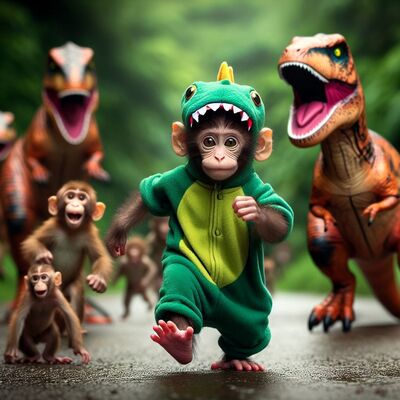Some animals at the Brookfield Zoo
Nov 23, 2018 06:41:38 #
The largest land-based predators on Earth, polar bears can reach up to 8 feet long and 1700 pounds in weight. Their distinctive white coat is actually composed of long, transparent hairs; the reflection of light on fur provides the white appearance.
Brookfield Zoo
Chicago, IL
May 2016
Polar Bear by Paul Sager, on Flickr
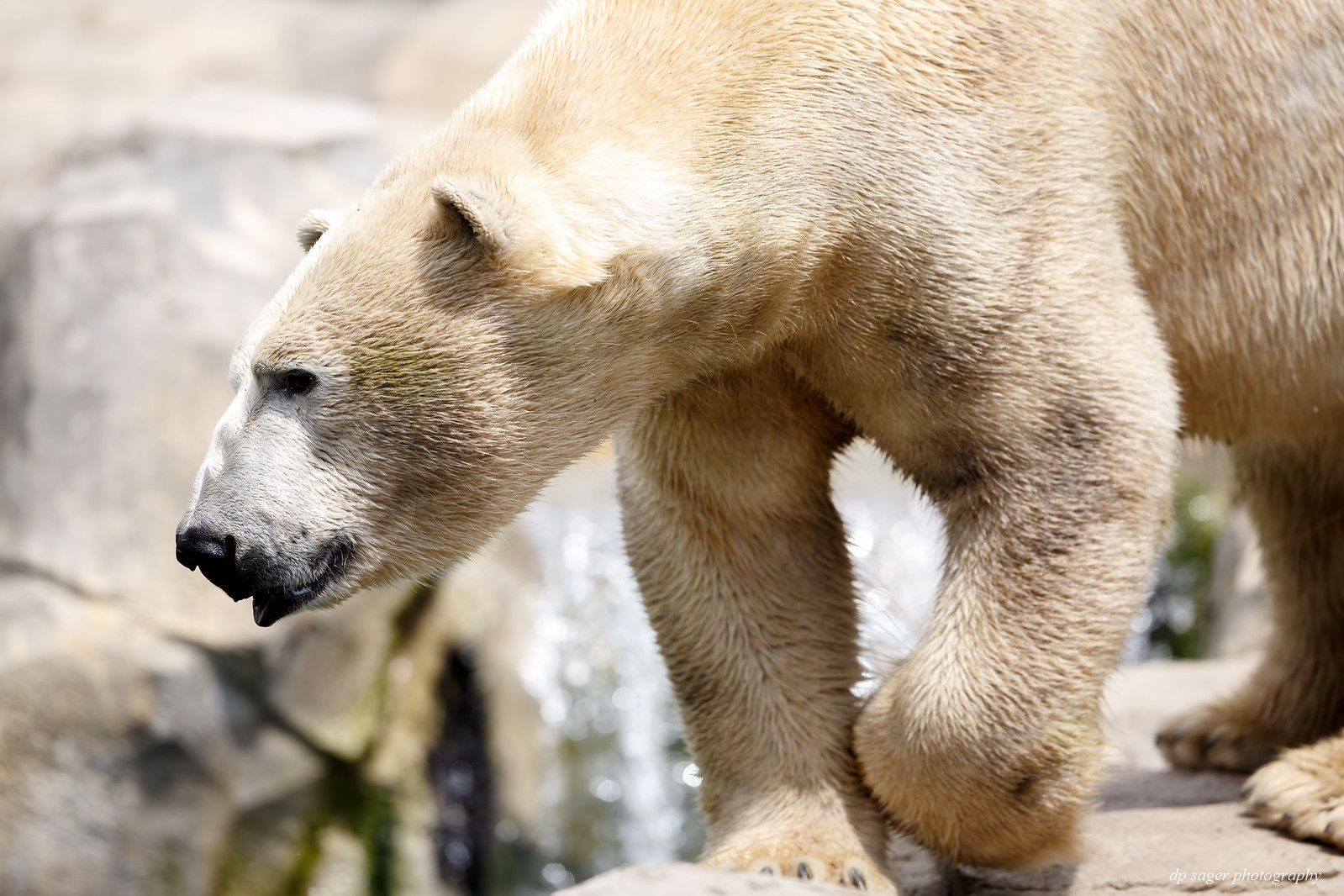
The Brookfield Zoo opened in 1934. During the early decades of the zoo, a mini-railroad existed, which carried guests around the outer perimeter of the park from the North Gate to the old seven seas dolphin habitat on the park's south end. The railroad was dismantled in the mid-1980s, although the pathways of the train track still exist, as does the North Gate station (since converted into a snack stand).
Humboldt penguins share their name with the chilly Humboldt Current, which flows north from Antarctica along the Pacific Coast of South America, where the birds live. Both birds and current are named after the 18th-century explorer Alexander von Humboldt.
Brookfield Zoo
May 2016
Humboldt Penguin

Red-vented bulbuls feed on fruits, petals of flowers, nectar, insects and occasionally geckos. They build their nests in bushes at a height of around 6- to 9-feet; two or three eggs is a typical clutch. Nests are occasionally built inside houses or in a hole in a mud bank.
Brookfield Zoo
May 2016
Red-Vented Bulbul

Schmidt's red-tailed monkeys live in hierarchical, male-dominant social groups with one male and multiple females in groups of 20 to 30 total monkeys. Bachelor troops of juvenile males may also form after the juveniles leave their family groups.
Brookfield Zoo
May 2016
Schmidt's Red Tailed Guenon
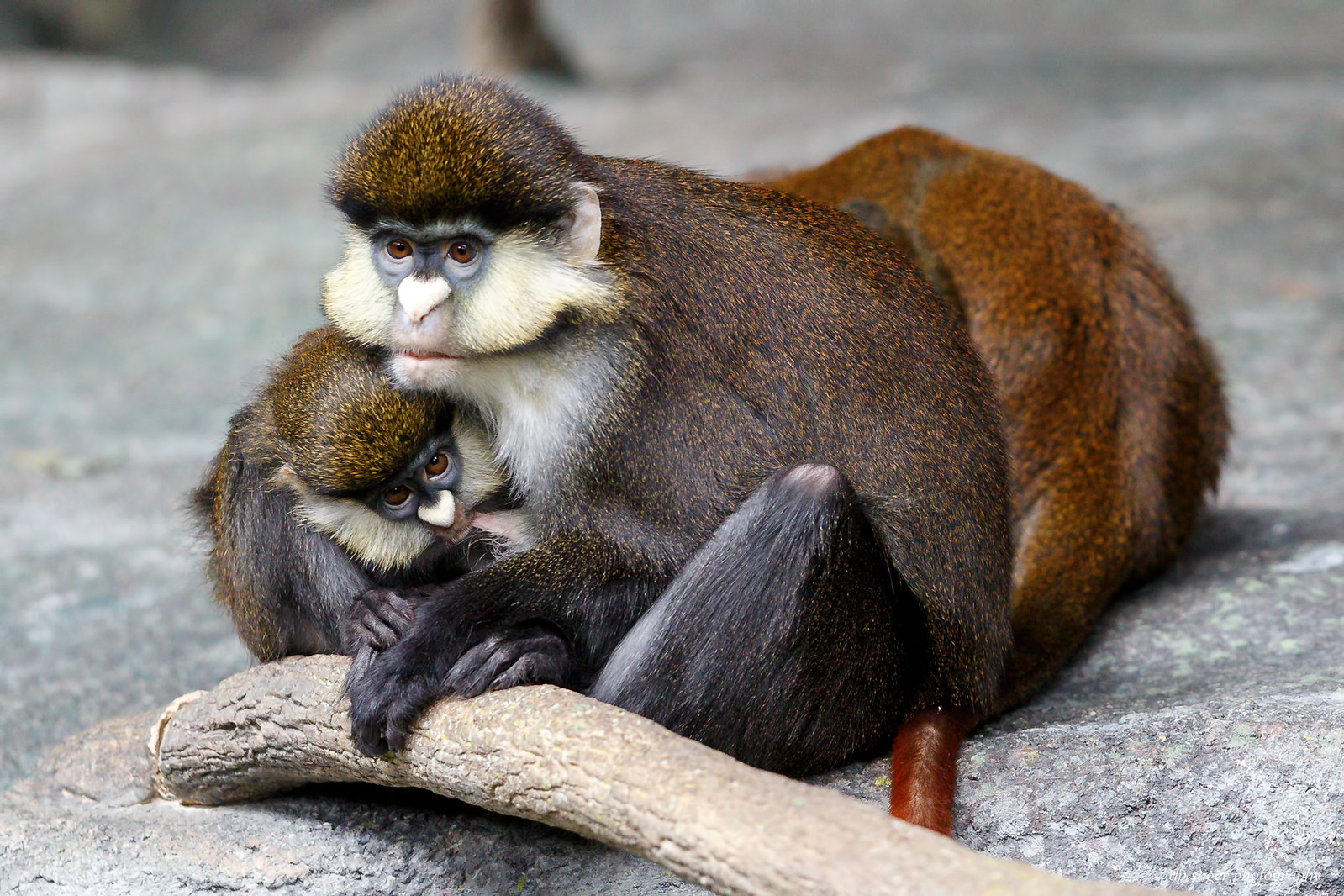
The Green-winged macaw has one of the largest, broadest ranges of any macaw species. It occurs in Central & South America, including Panama, Colombia, Venezuela, Guyana, Suriname, French Guiana, Ecuador, Peru, Brazil, Bolivia, and Paraguay in tropical forests, mangrove swamps, and savannas.
Brookfield Zoo
May 2016
Green-winged macaw
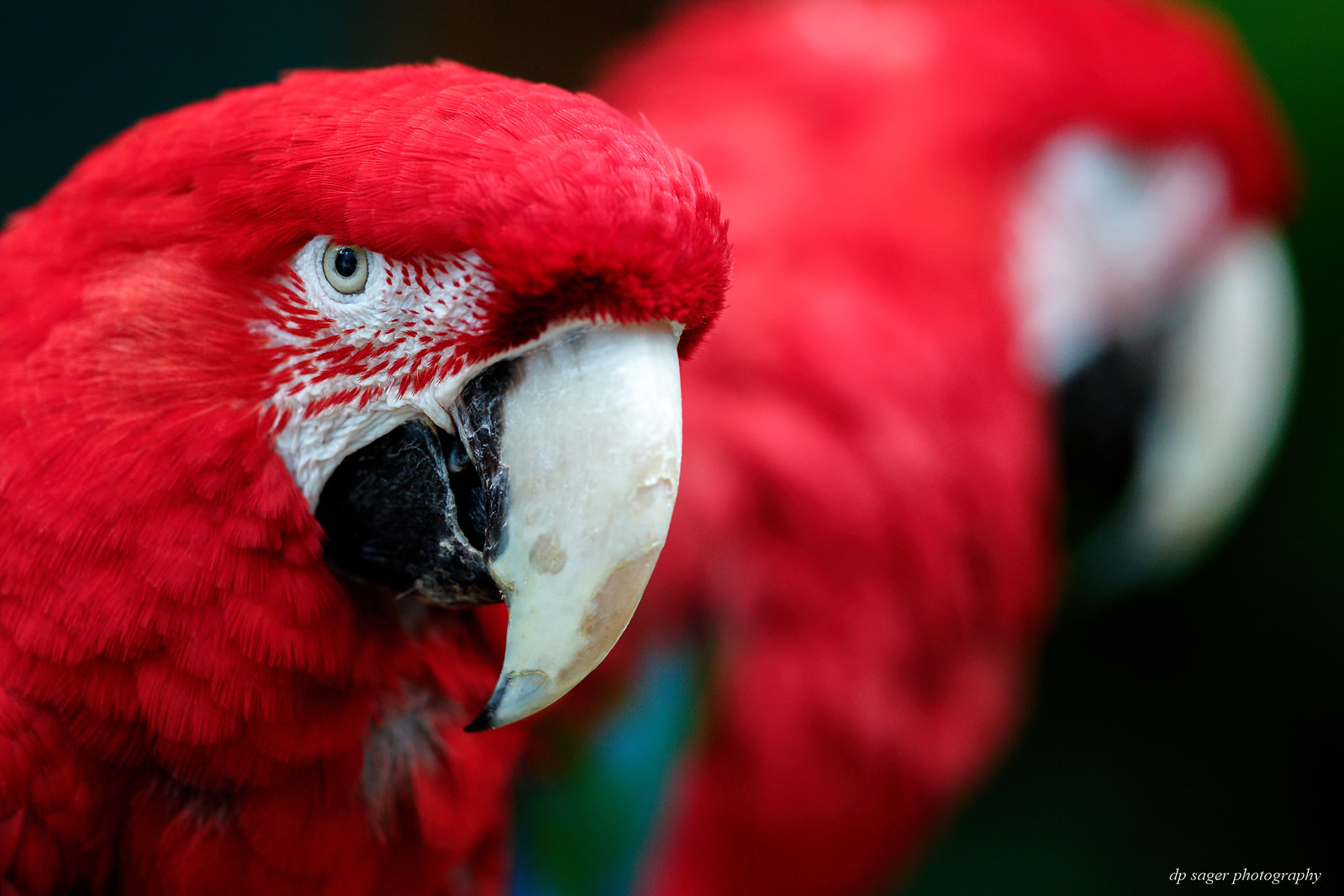
Despite its bright plumage, the colorful Blue-capped Motmot is hard to spot as it darts through the forest. The motmot flies in short, swift darting moves, leaving only a flash of blue and green as it passes between trees.
Brookfield Zoo
May 2016
Blue-capped Motmot
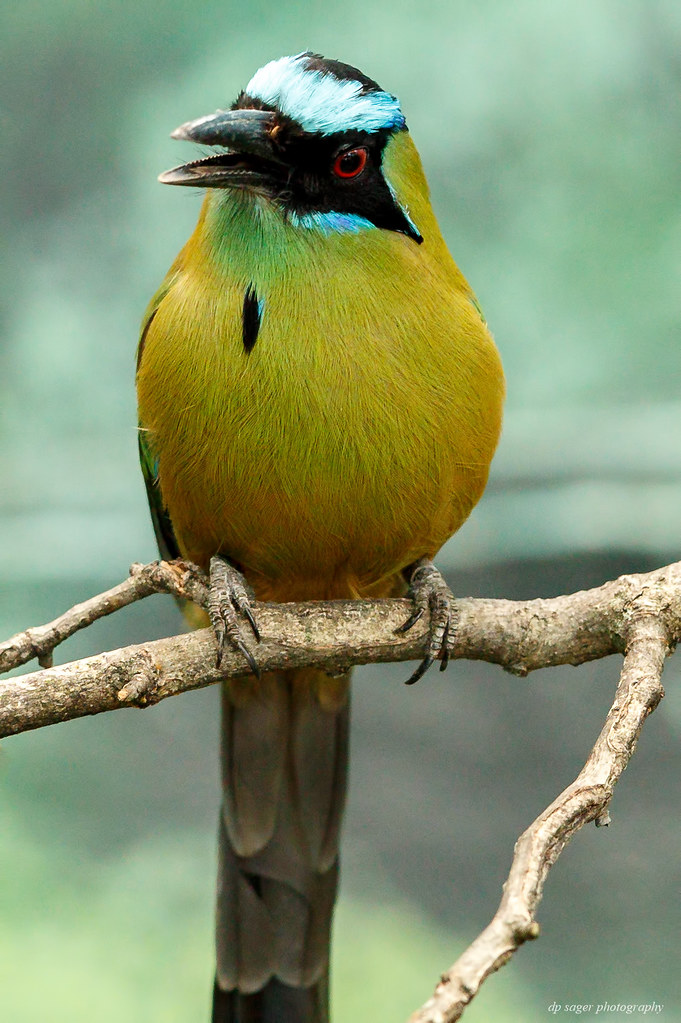
Like all great apes (except Homo sapiens), gorillas require rain forests to make their living, and the forest depends upon them, too. The gorilla’s fibrous scat acts as rich fertilizer for the forest, and seedlings sprout from it rapidly, making these animals important forest regenerators.
Brookfield Zoo
Jan 2016
Western lowland gorilla

These images are sized to fill your wide-screen display. Try using <F11> to maximize your browser window for the full effect. If the images overshoot your display, such as a laptop, just click on the image or the URL link and they'll resize to your screen from the host Flickr site. You can click a bit further into the image details on the Flickr page, if desired. EXIF data is available from the host Flickr pages as well. On the Flickr site, use your <L>key for Large and the <F11> for the full-screen.
Brookfield Zoo
Chicago, IL
May 2016
Polar Bear by Paul Sager, on Flickr

The Brookfield Zoo opened in 1934. During the early decades of the zoo, a mini-railroad existed, which carried guests around the outer perimeter of the park from the North Gate to the old seven seas dolphin habitat on the park's south end. The railroad was dismantled in the mid-1980s, although the pathways of the train track still exist, as does the North Gate station (since converted into a snack stand).
Humboldt penguins share their name with the chilly Humboldt Current, which flows north from Antarctica along the Pacific Coast of South America, where the birds live. Both birds and current are named after the 18th-century explorer Alexander von Humboldt.
Brookfield Zoo
May 2016
Humboldt Penguin

Red-vented bulbuls feed on fruits, petals of flowers, nectar, insects and occasionally geckos. They build their nests in bushes at a height of around 6- to 9-feet; two or three eggs is a typical clutch. Nests are occasionally built inside houses or in a hole in a mud bank.
Brookfield Zoo
May 2016
Red-Vented Bulbul

Schmidt's red-tailed monkeys live in hierarchical, male-dominant social groups with one male and multiple females in groups of 20 to 30 total monkeys. Bachelor troops of juvenile males may also form after the juveniles leave their family groups.
Brookfield Zoo
May 2016
Schmidt's Red Tailed Guenon

The Green-winged macaw has one of the largest, broadest ranges of any macaw species. It occurs in Central & South America, including Panama, Colombia, Venezuela, Guyana, Suriname, French Guiana, Ecuador, Peru, Brazil, Bolivia, and Paraguay in tropical forests, mangrove swamps, and savannas.
Brookfield Zoo
May 2016
Green-winged macaw

Despite its bright plumage, the colorful Blue-capped Motmot is hard to spot as it darts through the forest. The motmot flies in short, swift darting moves, leaving only a flash of blue and green as it passes between trees.
Brookfield Zoo
May 2016
Blue-capped Motmot

Like all great apes (except Homo sapiens), gorillas require rain forests to make their living, and the forest depends upon them, too. The gorilla’s fibrous scat acts as rich fertilizer for the forest, and seedlings sprout from it rapidly, making these animals important forest regenerators.
Brookfield Zoo
Jan 2016
Western lowland gorilla

These images are sized to fill your wide-screen display. Try using <F11> to maximize your browser window for the full effect. If the images overshoot your display, such as a laptop, just click on the image or the URL link and they'll resize to your screen from the host Flickr site. You can click a bit further into the image details on the Flickr page, if desired. EXIF data is available from the host Flickr pages as well. On the Flickr site, use your <L>key for Large and the <F11> for the full-screen.
Nov 23, 2018 06:50:20 #
Nov 23, 2018 07:01:25 #
Great shots what was your set up ,same lens or did you change lenses for different situations
Nov 23, 2018 07:05:20 #
CHG_CANON wrote:
The largest land-based predators on Earth, polar b... (show quote)
Great photos. Thanks for the "liner notes" as well!
Nov 23, 2018 07:32:18 #
Great shots. I had heard that about the color of polar bears - like the "color" of snow. I guess you can't see them in the dark. 
One question I've never had answered: do polar bears have a neck, or is that one big head?

One question I've never had answered: do polar bears have a neck, or is that one big head?

Nov 23, 2018 08:05:37 #
Nov 23, 2018 08:42:39 #
Your zoo posts are always a treat to see Paul. Excellent set and interesting information. 





Nov 23, 2018 08:50:15 #
Nov 23, 2018 09:06:02 #
CHG_CANON wrote:
The largest land-based predators on Earth, polar b... (show quote)
Paul, this is another excellent set of Zoo photographs from you.
My favorites of this set are the Red-tailed Gueman and the lowland Gorilla.....Excellent work....Tom
Nov 23, 2018 10:27:41 #
fantastic pics ...zoos are a great place to take pictures ...Whenever I visit a different city I try to go to their zoo ..you never know what you may find...love the monkey pic
Nov 23, 2018 11:55:25 #
jerryc41 wrote:
Great shots. I had heard that about the color of polar bears - like the "color" of snow. I guess you can't see them in the dark. 
One question I've never had answered: do polar bears have a neck, or is that one big head?

One question I've never had answered: do polar bears have a neck, or is that one big head?

Thanks Jerry! I think a veterinarian would tell us yes, a polar bear does have a neck.

Nov 23, 2018 11:56:21 #
NormanTheGr8 wrote:
Great shots what was your set up ,same lens or did you change lenses for different situations
Thank you NormanTheGr8! The full EXIF is available for each image at Flickr via the image title that is a URL. All are from an EOS 5DIII with only Nora the young gorilla coming from a different lens. I had rented an EF 400 f/2.8L IS II that I used just once at Brookfield in January 2016. All the other images presented here are from the EF 300 f/2.8L IS II. Glad you enjoyed.
Nov 23, 2018 11:58:06 #
Tom DePuy wrote:
Paul, this is another excellent set of Zoo photographs from you.
My favorites of this set are the Red-tailed Gueman and the lowland Gorilla.....Excellent work....Tom
My favorites of this set are the Red-tailed Gueman and the lowland Gorilla.....Excellent work....Tom
Thank you Tom! If I could, I would spend entire days with the gorillas and red-tails at Brookfield that are in the same large interior building where you can almost just turn back n forth to see them both from the same position. Glad you enjoyed.
Nov 23, 2018 11:58:43 #
mikel56ny wrote:
fantastic pics ...zoos are a great place to take pictures ...Whenever I visit a different city I try to go to their zoo ..you never know what you may find...love the monkey pic
Thank you mikel56ny! Our two zoos in Chicago share a lot of the same animals. A trip through multiple zoos in Florida showed a lot of the same animals in Florida-specific sections, but they were mostly all new to my Chicago eyes. Glad you enjoyed.
Nov 23, 2018 11:59:04 #
Thank you Swamp-Cork, Sylvias, Red Sky At Night, rmm0605, Dan! I've been raiding the archieves while out collecting new images from an extended trip. Glad you enjoyed.
If you want to reply, then register here. Registration is free and your account is created instantly, so you can post right away.







